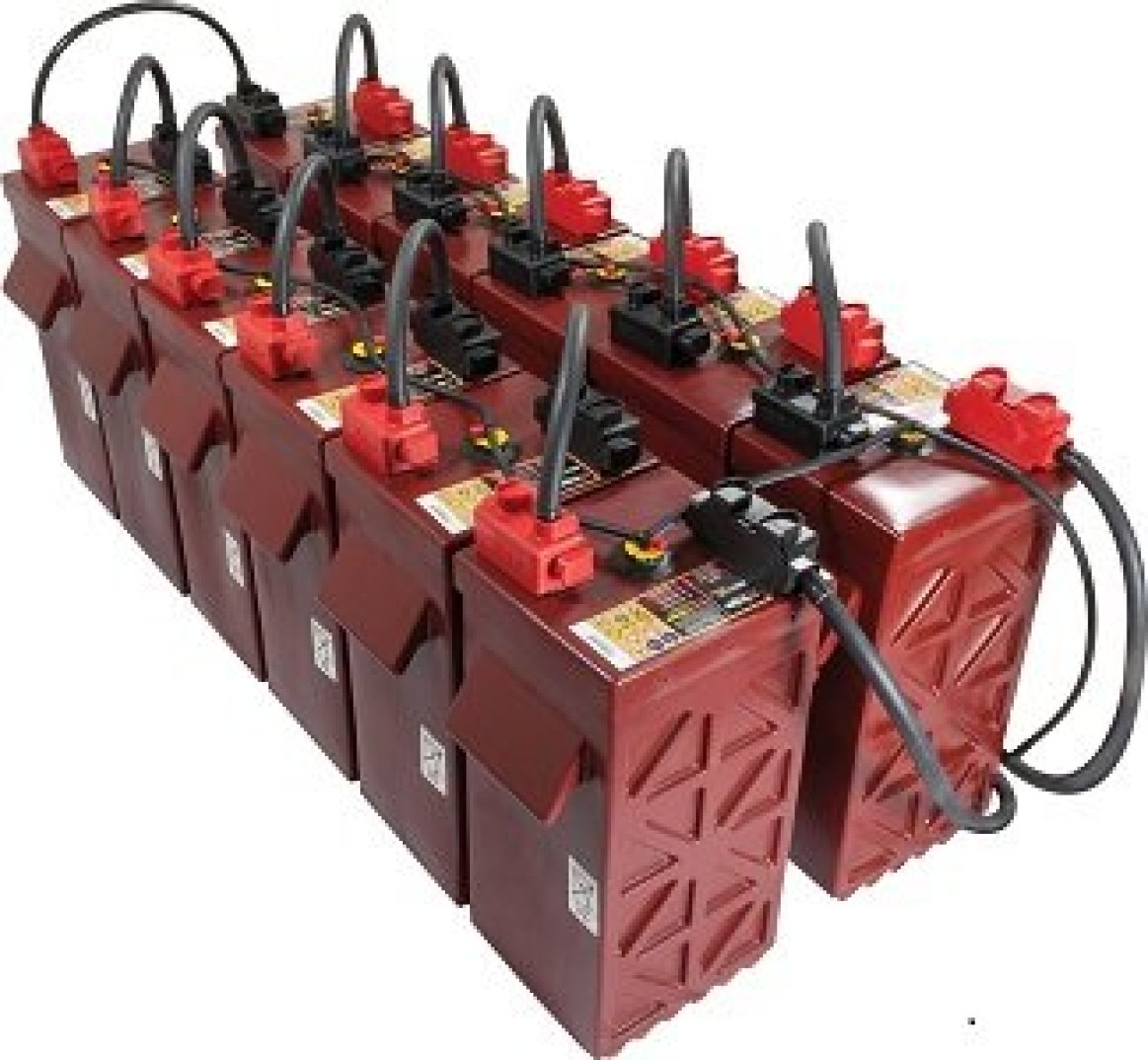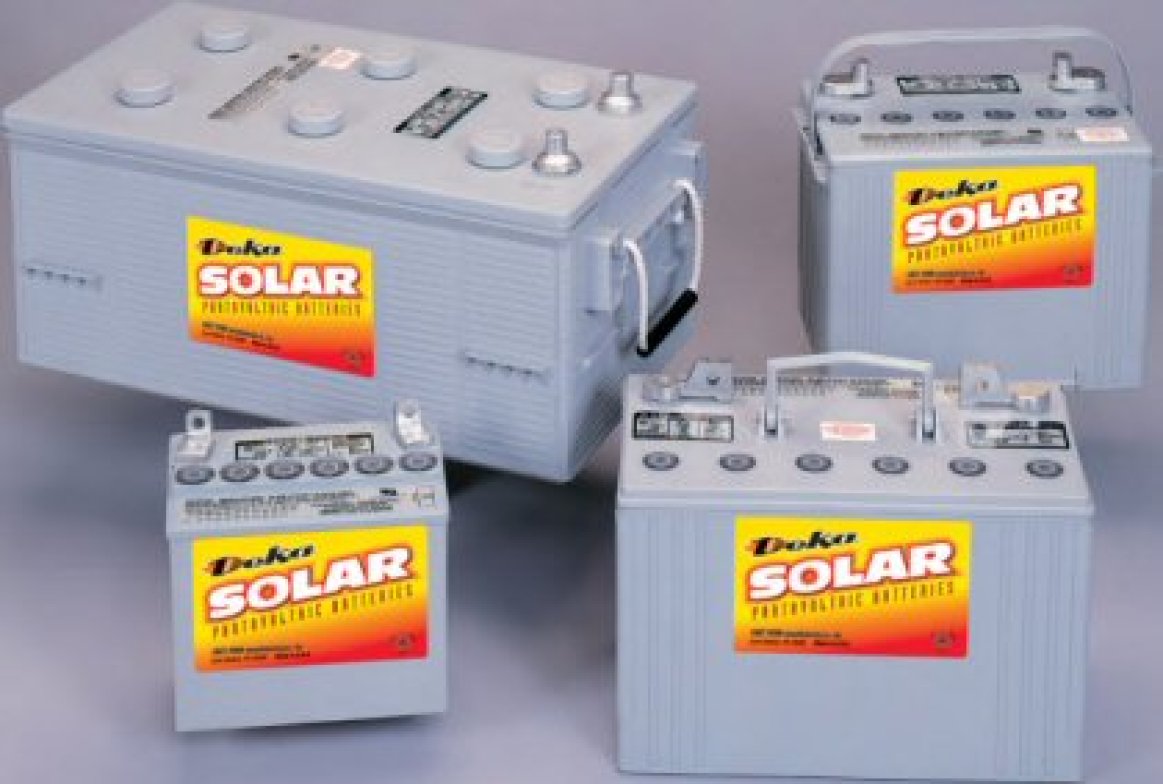

General Overview of Lead Acid Batteries
Lead Acid batteries are still the most common form of energy storage for photovoltaic systems. A lead acid battery charges, stores, discharges energy based on a chemical reaction of the metal that makes up the plates. The plates are in an acid that serves as the electrolyte to provide the electrons that participate in the reactions.
O2 + 2Pb → 2PbO
Pb + H2SO4- → PbSO4 + H+ + 2e-
PbO2 + HSO4- + 3H+ +e- → PbSO4 + 2H2O
These are reversible reactions that proceed in one direction when the battery is charging and in the other direction when it is discharging. The battery cycles by proceeding through these reactions repeatedly, back and forth. The more times that the battery goes through these cycles, the more the state of health of the battery gradually deteriorates. The state of health (SOH) of a battery is a subjective quality that is defined as the general condition of a battery and is an indication of expected performance, it is relative to the condition of the battery when it was new. Most batteries are considered to be at their end of life when they reach 80% of their initial, fully charged amp hour (Ah) capacity.
Common problems that arise over time (including deteriorating of SOH)
- Gassing- excess energy at the end of a charge cycle generates hydrogen and oxygen gases, if these are allowed to collect the mixture can become explosive
- Damage to Electrode- the negative electrode is especially soft and easily damaged
- Stratification of the electrode- essentially the layering of the sulfuric acid and water in the electrolyte solution, preventing reaction from occurring properly
- Sulfation of the battery- Buildup of PbSO4 crystals dramatically deteriorates battery performance, not allowing that lead to be converted back to PbO2 in recharge, reducing total energy storage capacity
- Leaking sulfuric acid- this poses a significant health risk since sulfuric acid is highly corrosive
- Temperature degradation- high temperatures give additional capacity initially but reduce the life of the battery and above 125 F damages battery and causes early failure. Likewise, extremely low temperatures can cause damage by freezing the electrolyte
- Short circuits- primarily caused by overcharging and overdischarging the battery, each short circuit reduces the battery capacity
Design, Operation, and Maintenance that can prevent these problems
- Gassing can be prevented by ensuring that the water level in the battery remains high and the battery is properly vented - also that the battery charge settings are correct for the type of battery.
- Stratification can be prevented by controlled gassing of electrolyte - also by using an equalization charge in flooded batteries to re-homogenize the electrolyte. This cannot be used for VRLA batteries.
- Sulfation can be corrected by applying a controlled overcharge to a fully charged battery and increasing the temperature to break up the crystals (Equalization).
- Gelling or immobilizing the acid reduces the possibility of acid spills
- Maintaining battery in 60-80 F ensures longest lifespan with least reduction in capacity
- Modifications to the actual battery configuration can improve performance- electrode composition and geometry, the electrolyte solution, battery housing or terminals
Battery Design - Vented / Flooded vs Sealed - Valve Regulated (VRLA)
- Vented / flooded Lead acid batteries
- Most economical of Lead Acid batteries.
- Life is longer than VRLA batteries.
- Robust and less sensitive to temperature than Sealed VRLA.
- Needs periodic maintenance - twice a month.
- Emits corrosive fumes.
- Needs acid proof battery room / enclosure
- Cannot be transported in charged condition, initial charging takes 55 to 90 hours.
- Needs specially trained persons for handling due highly hazardous sulphuric acid.
- Sealed maintenance free batteries / Valve Regulated Lead Acid
- No maintenance as far as water filling, specific gravity check etc is concerned.
- Can be shipped in charged conditions so ready to use.
- User friendly - can ship as non-hazardous goods and can be installed in almost any orientation.
- Leaving batteries in discharged state for longer times will reduce life significantly or can damage them permanently.
- Very sensitive to temperature
- Service life shorter than Flooded.
- Costlier than flooded / vented lead acid battery
Reference:
http://electrical-engineering-portal.com/different-types-of-battery-used-for-auxiliary-power-supply-in-substations-and-power-plants